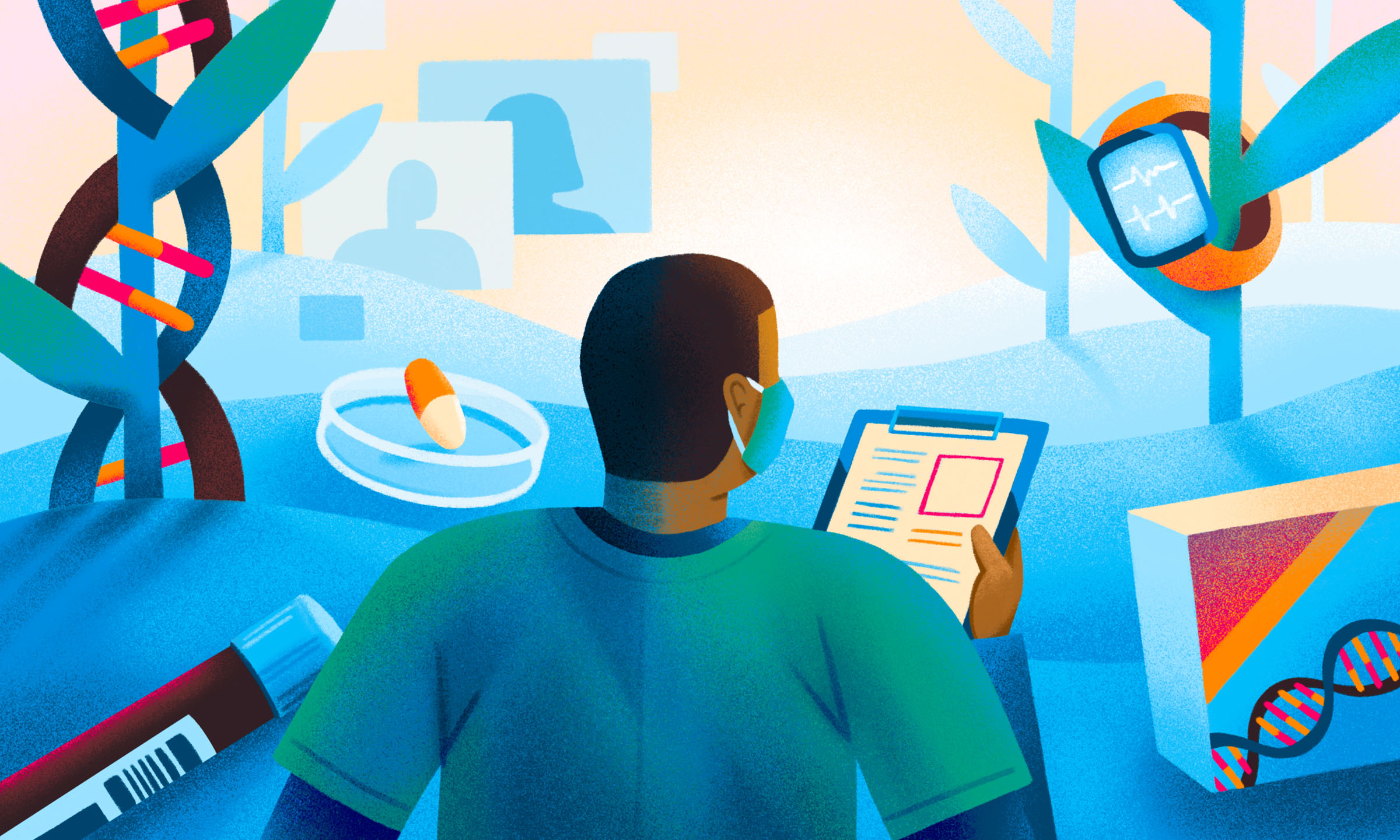3 Healthcare Innovation Trends to Watch in 2023
CoverMyMeds, like HLTH, is driven by innovation. We survey thousands of healthcare stakeholders each year for the Medication Access Report, and here are three takeaways from 2022 that we see carrying into next year. Visit us in The Salon at HLTH this year to learn more about how we're innovating to help people get the medication they need to live healthier lives.

The healthcare industry is changing fast, and it has much change ahead of it as stakeholders continue to expand the use of data and technology. The COVID-19 pandemic sparked unprecedented use of digital tools in all areas of life, including keeping patients, providers and pharmacists connected. Whether it’s a virtual visit or online shopping for prescriptions, technology unquestionably has improved healthcare access.
Here are three digital healthcare trends we’ll continue to see evolving as we head into 2023.
Trend 1: Unlocking patient health data
Access to accurate information is critical in the moments patients find themselves making healthcare decisions. The same holds for providers and pharmacists as they counsel patients about those decisions.
The right data at the right time across the healthcare ecosystem can make all the difference for patient empowerment. Much progress has been made here in recent years, but a lot of work remains, too — an insight made even more noticeable by the pandemic.
For example, the 2022 Medication Access Report found only 25% of providers and 36% of pharmacists have access to critical information like plan- and pharmacy-specific pricing, cash pricing and patient-deductible data. But to better inform medication affordability conversations with patients and help patients start specialty therapies, 56% of providers and 63% of pharmacists said they need access to patient-specific benefit information.
This is where we hope the 21st Century Cures Act Final Rule will start to make a difference as it continues to evolve. Implemented at the onset of the pandemic, this act includes provisions meant to give patients more control over their own health information.
The act aims to accomplish this in two ways. First, by delivering accurate, timely and actionable healthcare data, more conveniently, to patients and their providers. And secondly, by promoting visibility of healthcare services, quality and costs to activate patients as participants in their healthcare.
Trend 2: Robust patient adoption of technology such as mobile apps
While not a silver bullet, interoperability, or the ability for health data to be shared across systems, holds potential as a major advance. That’s true particularly for patients, who increasingly are accessing their health data on mobile apps.
The 2022 Medication Access Report found 90% of patients had electronic access to medical labs, tests, data and more through a patient portal. And 86% said they could easily share this data with providers, specialists and pharmacists.
These developments are important because of what they enable patients to do. Patients can use digital apps to gather and access their medical records, including physician notes, test results and medication and benefit information. Patients can also shop for care by comparing costs and better understanding possible treatments and expected health outcomes. And patients can control which apps they use, which third parties may access their records and how their healthcare information can be used.
These moves also should enhance access to data for concierge services that can help identify what's best for the patient. With patient-centric technology enabling transparent communication between healthcare stakeholders, everyone gets a better experience.
Ultimately, patients would benefit from having all their health data, including biometrics from connected devices, prior authorization and medication refills, for example, in one centralized app. The optimal result? More informed consumers with access to better care at a better price.
Trend 3: The staying power of telehealth
Telehealth had been growing in use for more than a decade ahead of 2020, but it remained somewhat of a niche service used, for example, by rural healthcare providers to connect patients with specialists in nearby metropolitan areas. The COVID-19 pandemic forced a sudden shift to many more patients having videocalls with their healthcare providers.
It’s a market expected to reach $787.4 billion by 2028Telehealth Market Size Worth $787.4 Billion By 2028, Grand View Research, Jan. 17, 2022, and while telehealth appointments have dropped from peak levels experienced during the height of the pandemic, its use continues. It gives patients and providers more time in the day by eliminating commutes and having patients check in ahead of their appointments via smartphone.
The 2022 Medication Access Report found 66% of patients said convenience was a big reason they used telehealth — up from 56% in 2020. Forty-five percent of patients cited cost as a factor — up from 24% in 2020.
Ultimately, these evolving digital solutions — more open data sharing, patient use of technology, and more widespread, normalized use of telehealth — are helping people access and afford their needed medicine. Digital channels also provide an opportunity to help patients adhere to their medicines — whether that help arrives through managing side effects or patient expectations around the efficacy of their medication.
When patients are better informed of the various pros and cons of their therapy, they’re better able to make decisions about which therapy is best for them and their condition. Technology holds the keys to accessing that information when it’s needed most.
Visit CoverMyMeds at the Salon during HLTH and learn about the innovations we’re creating to advance healthcare.
The latest healthcare insights, floated right to your inbox.



